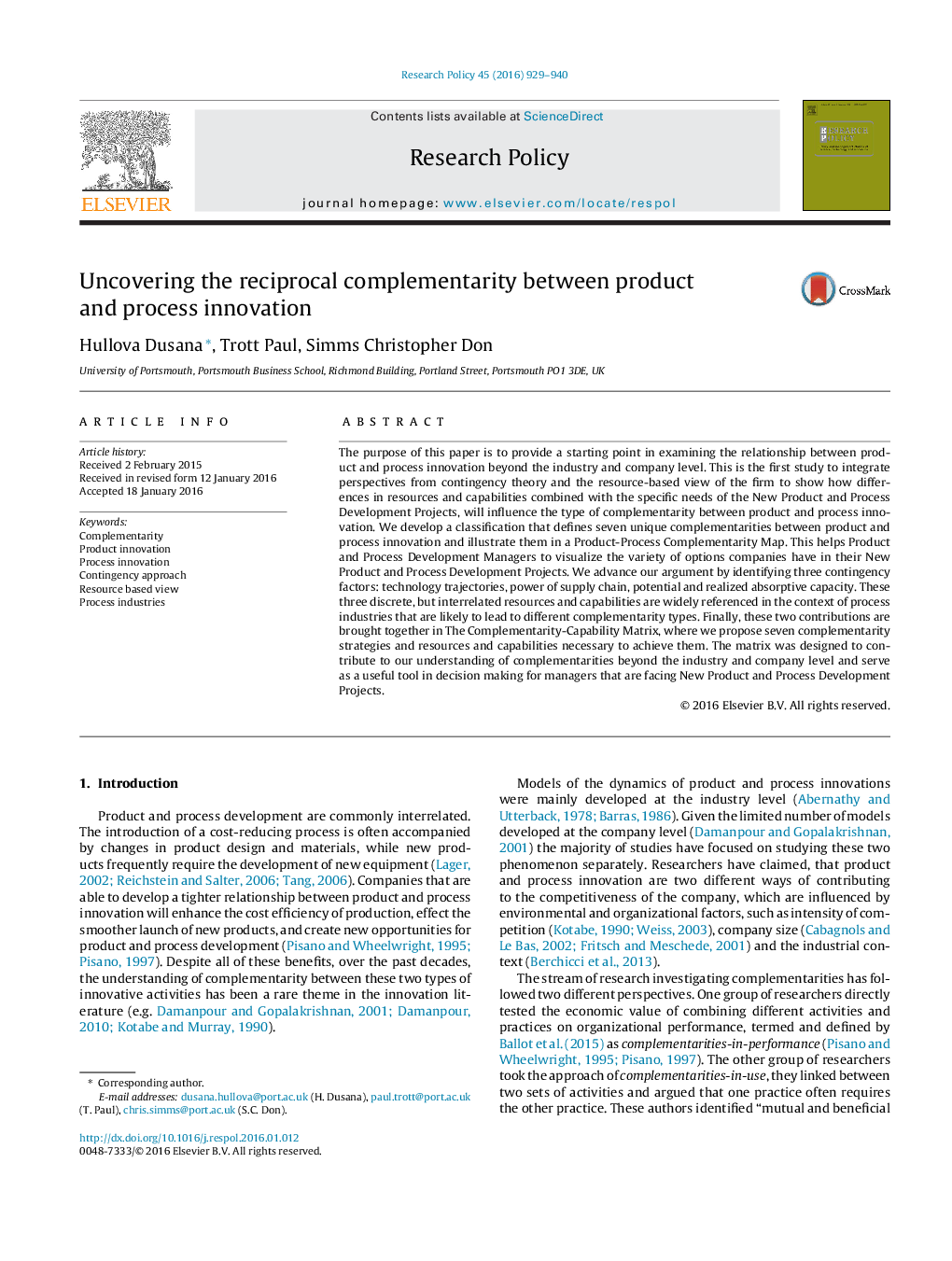| Article ID | Journal | Published Year | Pages | File Type |
|---|---|---|---|---|
| 10482841 | Research Policy | 2016 | 12 Pages |
Abstract
The purpose of this paper is to provide a starting point in examining the relationship between product and process innovation beyond the industry and company level. This is the first study to integrate perspectives from contingency theory and the resource-based view of the firm to show how differences in resources and capabilities combined with the specific needs of the New Product and Process Development Projects, will influence the type of complementarity between product and process innovation. We develop a classification that defines seven unique complementarities between product and process innovation and illustrate them in a Product-Process Complementarity Map. This helps Product and Process Development Managers to visualize the variety of options companies have in their New Product and Process Development Projects. We advance our argument by identifying three contingency factors: technology trajectories, power of supply chain, potential and realized absorptive capacity. These three discrete, but interrelated resources and capabilities are widely referenced in the context of process industries that are likely to lead to different complementarity types. Finally, these two contributions are brought together in The Complementarity-Capability Matrix, where we propose seven complementarity strategies and resources and capabilities necessary to achieve them. The matrix was designed to contribute to our understanding of complementarities beyond the industry and company level and serve as a useful tool in decision making for managers that are facing New Product and Process Development Projects.
Keywords
Related Topics
Social Sciences and Humanities
Business, Management and Accounting
Business and International Management
Authors
Dusana Hullova, Paul Trott, Christopher Don Simms,
